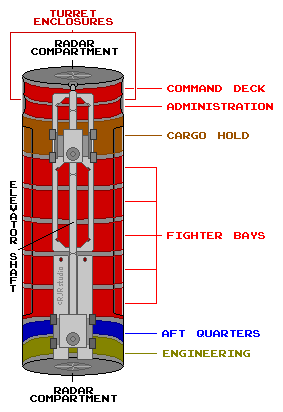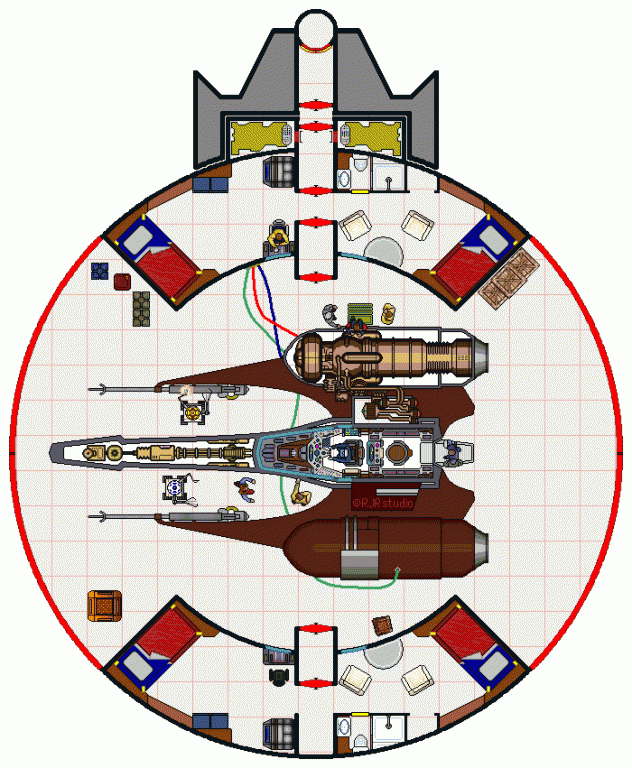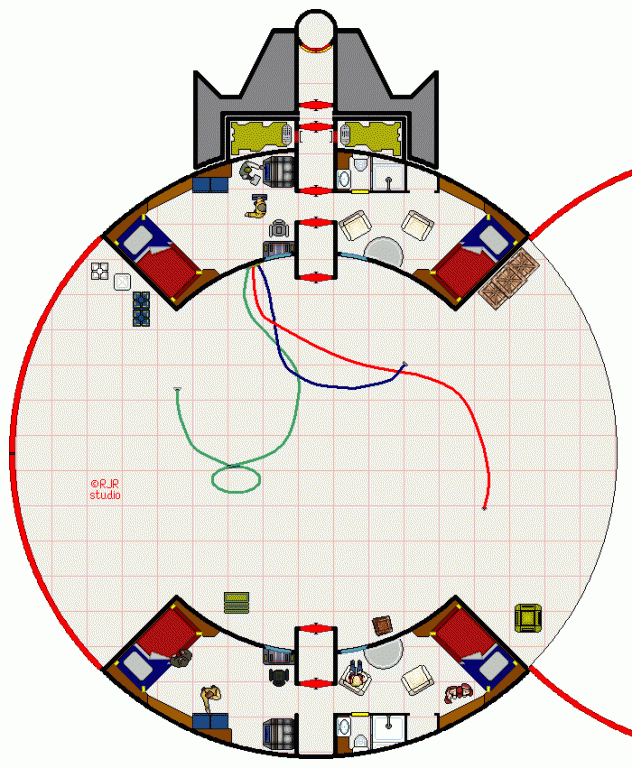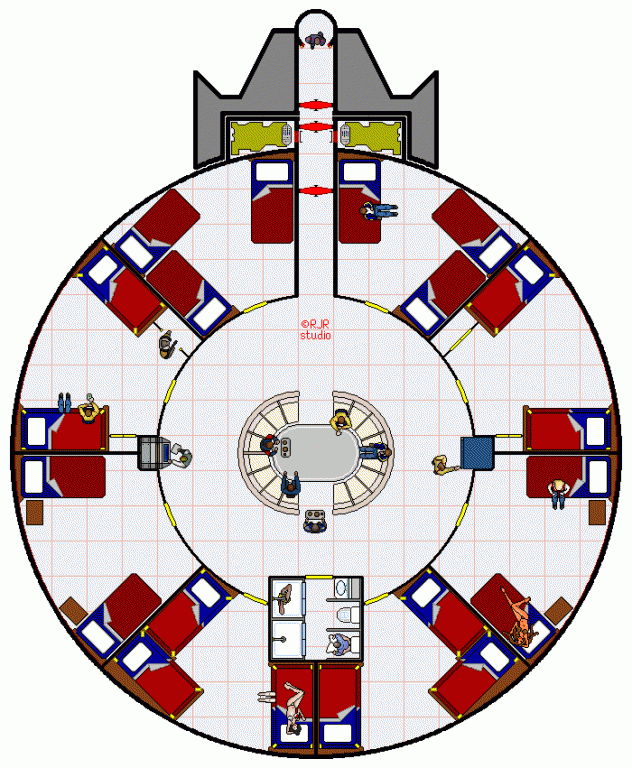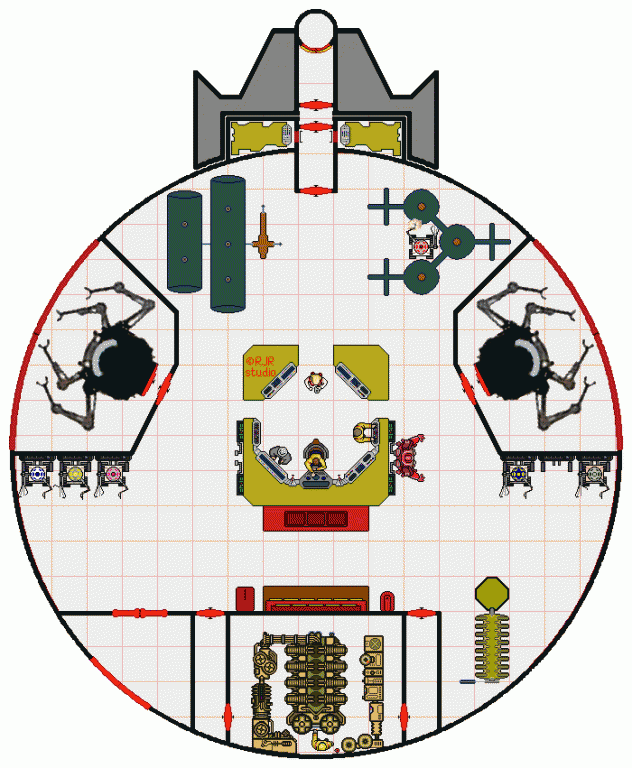Corsair Container
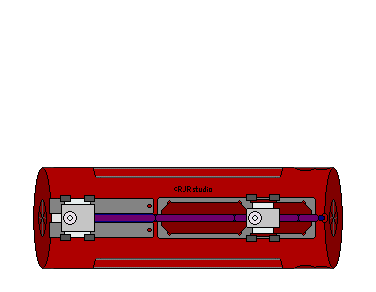
Container Size: 5
Hull Points: 40
ADF/MR: 0/0 DCR: 90
Armament: PLT (x2)
Defenses: RH
Communications/Detection: SubSpace Radio, Radar, WNB, Intercom
Misc: Heavy Armor
COMPUTER
Bureaucracy (3), Computer Lockout (3), Computer Security (4), Damage Control (2), Industry (2), Installation Security (4), Laser Battery (1, x2), Life Support (1), Maintenance (3), Robot Management (4)
Cargo Capacity: 1
Crew Accomodations:
Passenger Accomodations:
Vehicles: 5 fighters
Crew Positions
commander
5 fighter pilots
1 shuttle pilot
8 gunners
chief engineer
6 aux engineer (inc 5 crew chiefs)
astrogator
6 computer operators (inc 5 fighter crew)
medic
20 technicians (inc 15 fighter crew)
6 roboticists (inc 5 fighter crew)
12 troopers
The Corsair Container is a customized CC-500 container module converted by pirates for luring unwary container ships into their midst. Any ship unfortunate enough to load such a container to their universal cargo rail is in for a nasty surprise, as the corsair's twin laser turrets come online in a perfect position for taking out the host ship's drives and maneuvering systems. And for any cautious ship approaching, TT vessel or otherwise, the container hosts a squadron of five fighter craft equipped with pod lasers and turrets that can disable such craft just as efficiently. Worse yet, any pirate fleet containing a TT container ship can incorporate this module as a mini-carrier, thus enhancing that fleet with a squadron of deadly fighter craft (although the turrets would be limited to rear firing only, being obstructed by the engine struts and hull to prevent fore, port, or starboard target acquisitions).
The container's actual hold is minimal, sufficient for storing supplies to keep the operation going more than valuable cargo. To this end, such containers pressed into service tend to orbit a derelict planet or moon (or drifting near such bodies) where actual valuables can be stored for later pick up by a parent ship, oftentimes accompanied by a small outpost set-up for additional crew and supplies. A shuttle ferries goods and crew back and forth from the settlement to the container, which is typically berthed at the surface compound (although there is a berth on the container to host the shuttle, however it is rare to encounter the module with shuttle attached as it serves to give away the station's nature).
At the fore is the command deck and administration deck, aft of that is the small hold. Five separate fighter support decks follow, each with cabins to support the fighter crews. A crew quarters deck and maintenance deck rounds out the design at the stern. A lift shft connects all decks, and is modular to accept the lift from a host container ship as well. Obviously the design of this container is to lure unsuspecting TT ships to pirate groups wishing to obtain such craft for their own use, and as such the design is a very formidable one.
Deck 1 - Command
The command deck hosts the operational centers of the corsair container module. Centrally located is the commander's station, flanked by a communcations array (NE), radar center (SE), systems op center (SW), and the mainframe computer (NW). Port and starboard are the fire control stations for the two laser turrets.
A maintenance robot is typically berthed within the mainframe computer access (adjacent to the station), and a trio of combat robots are berthed adjacent to the communcation arrays. A second maintenance 'bot is contained within the sensor array access, and the station's armory is located adjacent to the op center along with another trio of combat robots.
The dorsal side hosts the docking module/lift shaft, and a shuttle berth occupies the ventral side complete with an airlock and docking collar.
(all deck plans utilize one meter squares)
(some interior details originally from ColonialChrome.co.uk)
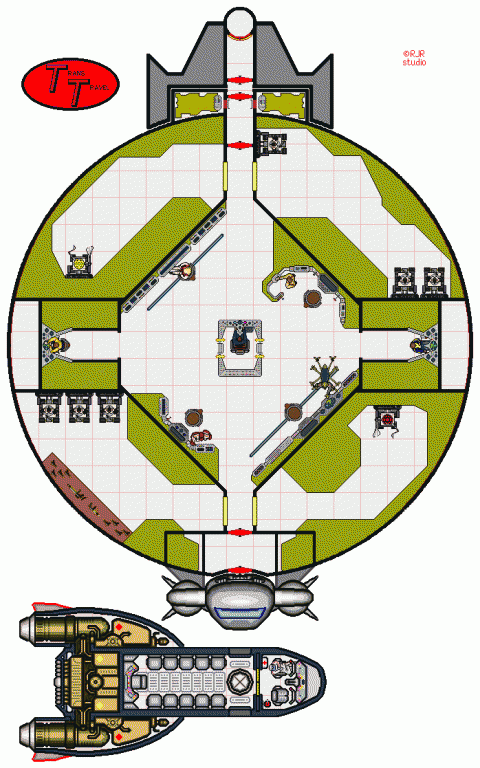
Deck 2 - Administration
Deck 3 - Cargo Hold
The cargo hold is an open area intended to store wares for the independant station crew. With a 10 meter ceiling it doesn't support much in the way of massive valuable collections of swag, but it holds more than enough goods to sustain the crew.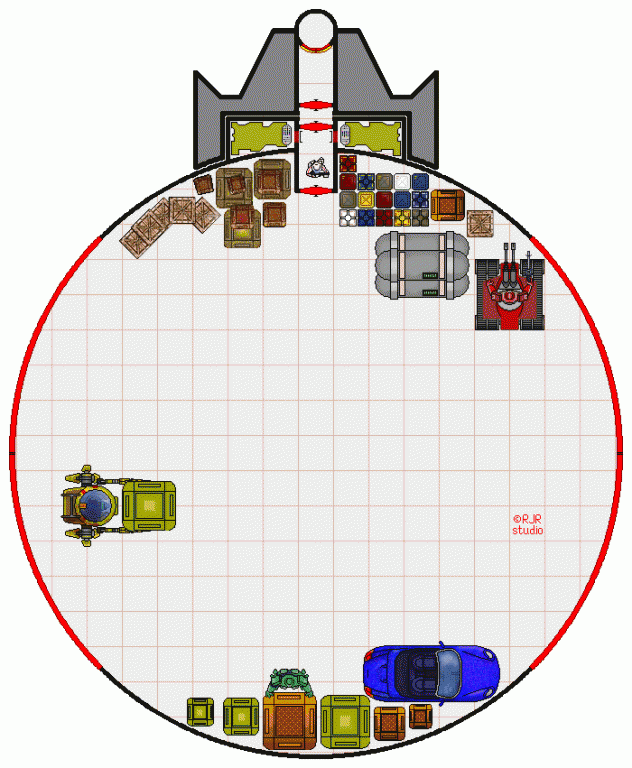
Deck 4 - Fighter Bay #1
The Corsair Container houses five separate fighter bays, taking up the bulk of the station. Each bay has quarters for eight, occupied by a pilot, gunner, a computer operator, and an engineer/deck officer plus a team of several technicians for upkeep and repairs. Each quarters section has a mini-galley and a fresher, along with a lounge and exterior atmosphere control/monitoring station. Most importantly is the open area designated to berth and secure a single fighter craft, which just fits into the confines and through the bay doors. Fortunately with the station in constant weightlessness (except during transport via a container ship), the confines aren't an issue.
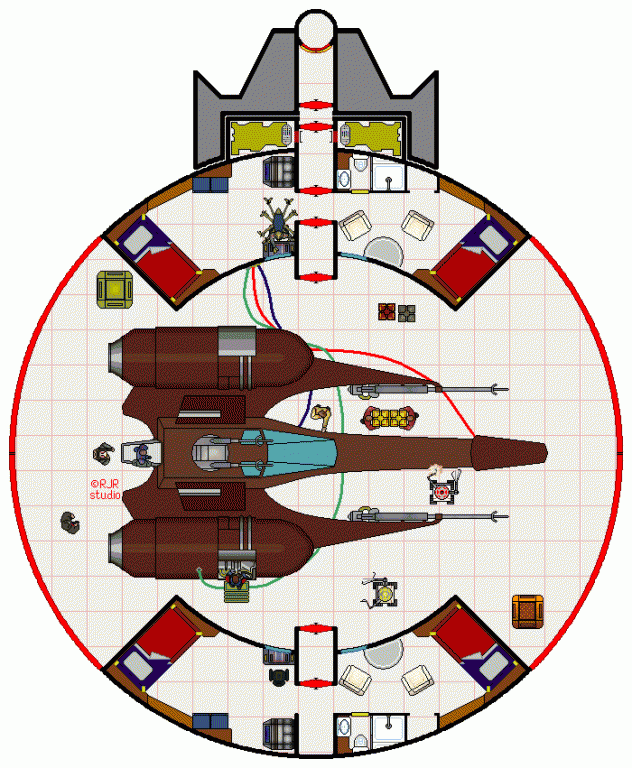
Deck 5 - Fighter Bay #2
Same as Fighter Bay #1, this depicts the interior details of the two man fighter craft.
Deck 6,7, & 8 - Fighter Bays 3-5
Again, similar to Fighter Bays 1 and 2...this depiction shows a vacated bay. Bays 3, 4, and 5 are otherwise the same.
Deck 9 - Aft Quarters
This deck houses the remaining officers and crew members. Commanding officers occupy the two double occupancy cabins, crew occupy the triple and quadruple occupancy cabins. A communal lounge fills the center, circled by entertainment consoles, refrigeration unit, and a mini-galley, and a fresher rounds it out on the ventral side.Deck 10 - Maintenance Deck
The nuts and bolts end of the station rests in the stern. Flanking the docking platform/lift shaft ont he dorsal side is a life support unit and water tankage with a purification plant. A pair of workpods reside in separate bays port and starboard, with a trio of maintenance robot berths adjacent to each bay. Located ventrally is a nuclear reactor, its chamber is flanked by a pair of airlock accessways complete with decontamination equipment and insuit storage Adjacent to port of the reactor chamber is a generator and power relay station, starboard of the chamber has a large parts egress/airlock. Located centrally is an engineering station that monitors power and operations, along with a complete workshop ventrally adjacent of the engineering station.S-200 Assault Shuttle
armed shuttle craft
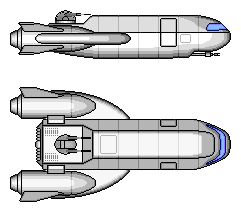
HS:2 HP:12 Poweplant: 2 chemical A
ADF:2 MR:4 DCR:26 Crew:2
Armament: PL, PLT
Defenses: RH
Communications/Detection: SubSpace Radio, Radar
Misc: Light Armor, streamlined
COMPUTER
Alarm (2), Analysis (2), Astrogation (2), Computer Lockout (3), Damage Control (2), Installation Security (3), Laser Battery (1), Laser Cannon (1), Life Support (1, capacity:12), Maintenance (2)
Cargo Capacity: 0.5 or personnel
Crew Accomodations: 2 command chairs
Passenger Accomodations: 12 folding acceleration seats
Vehicles: 0
The S-200 is an armed shuttle craft, appropriately enhanced to protect its load during transit. As such it has been upgraded with system ship astrogation equipment, intended for longer range missions beyond standard surface to orbit shuttle flights. The cargo area can be quickly adapted for goods or personnel, and the aft turret can be accessed in the hold by one of the assigned crew.
S-4 Corsair
tactical assault fighter
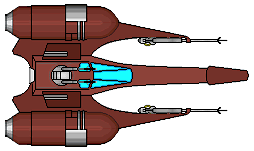
HS:1 HP:8 Poweplant: 2 atomic A
ADF:5 MR:4 DCR:30 Crew:2
Armament: PL, PLT
Defenses: RH
Communications/Detection: SubSpace Radio, Radar
Misc: Heavy Armor
COMPUTER
Alarm (2), Analysis (2), Astrogation (2), Computer Lockout (3), Damage Control (2), Installation Security (3), Laser Battery (1), Laser Cannon (1), Maintenance (2)
Cargo Capacity: 0
Crew Accomodations: 2 command chairs, no life support
Passenger Accomodations: 0
Vehicles: 0
The S-4 Corsair is a lethal weapon when considering civilian ship engagements. Even so, it has more than enough firepower to ward off military fighter craft as well, but acting alone they would have trouble against larger warships. Operating as a squadron, the opposition's risk increases once more.
Boasting twin atomic drives (with jump governors installed), the extra grunt permits a larger array of weaponry without affecting performance much. As a civilian design, it is actually quite remarkable despite the additional costs involved.
Even so, there are obvious corners that were cut. First and foremost being the lack of any life support equipment. Which is fine considering the nature of the craft, it's not meant as a long range patrol vessel. Also noteworthy is the lacking auto-eject module and associated stress analysis software package, which forces a pilot to think about the situation he/she is about to get into. While there is ample room for such equipment, it was left out (but shouldn't be much of a hassle to add later on). Noteworthy is the addition of a second command chair for a gunner, the unlimited firepower of the pod lasers in conjunction with the 360º laser turret makes this something of a contender in any arena.
